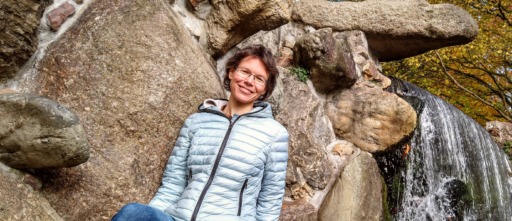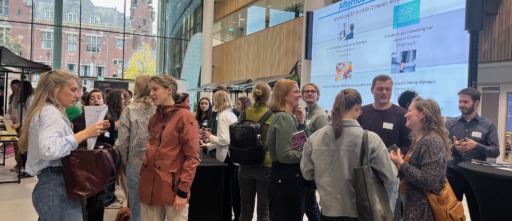Digital Health Challenge Lab: Building a new innovation ecosystem from the ground up
When it comes to healthcare innovation, real change rarely happens in isolation. That’s why the Digital Health Challenge Lab (DHCL) was founded: to build solutions with the region instead of for it. Behind the scenes, a strong consortium of organisations is working to turn question-driven innovation into lasting impact, by listening closely to what people in the neighbourhoods really need.
The origins of DHCL lie with Floor van de Watering and Tom van de Belt. Tom, then working at Radboudumc. “Most care happens not in hospitals, but in people’s homes. That insight pushed me to look at what already existed in the region and where the gaps were”, he says. Together with Floor van de Watering, he conducted an ecosystem analysis. It revealed plenty of talent, funding opportunities and active organisations, but also fragmentation. “We needed to stop reinventing the wheel in silos and instead start building together. That’s why we brought these partners to the table.”
Tom’s experience with projects that fizzled out after a pilot reinforced the need to reverse the usual innovation approach: rather than pushing solutions towards healthcare, the Challenge Lab starts from the bottom up. “We ask residents and professionals what’s really frustrating them and invite companies to respond. That’s a radically different starting point.”
At the HAN University of Applied Sciences this logic fit seamlessly. As part of the programme team, Tom now takes a coordinating role: “We’re responsible for managing resources, timelines and collaboration between partners. But more than that, we want to refine the methodology of challenge-based innovation itself.” HAN’s applied research expertise helps guide the process from identifying real-life needs to measurable outcomes. With more than 30 neighbourhood labs and workspaces already embedded in the region, HAN is perfectly placed to collect signals from the ground and feed them back into the innovation loop. “We see the region as our campus”, says Tom. “We’re changing how we educate, research and innovate: faster, more responsive, and always in partnership.”
One of those key partners is Oost NL, represented by project lead Tessa Dijkgraaf. Oost NL was involved from the start, when programme manager Floor still worked there. Today, they focus on business development, co-creation and supporting SMEs through a voucher programme. “We help companies identify the next steps: who to connect with, what support they need, and how to grow”, Tessa explains. “It’s not about inventing something just because you can. It has to solve a real problem. That’s why we’re so committed to pulling challenges from the field, not pushing ideas onto it.”
Getting those challenges on the table is no small feat. That’s where Maurits van Schaik from open innovation bureau Starthubs, comes in. “We’re responsible for the platform and the process of collecting challenges”, he says. The key? Letting professionals vent. “We held frustration sessions with neighbourhood nurses, social workers and residents. Just an hour to say what’s going wrong. And then we mapped it all.” The result: a sharp ‘pain point map’ with seven key challenge areas. “We help partners turn these into open innovation questions: What if you had more hands? What if you could offload a task? It sparks the right kind of thinking.”
Translating pain points into feasible challenges also requires a deep understanding of healthcare reality. That’s where Health Valley comes in. Innovation manager Annemarie de Vries explains: “I’ve worked 25 years in care and business development, so I know how to connect the dots. A hospital CTO speaks a different language than a community nurse. We help bridge that gap.” Health Valley contributes by identifying realistic challenges, promoting them through its network, and guiding matchmaking between companies and care organisations. “Our job doesn’t end when the match is made. We look at what’s needed for a successful pilot, and what’s needed to keep it going afterwards.”
This long-term perspective is also central to Julian Leijser’s role as programme coordinator. Together with Floor, she manages the internal structure and guides partners through the different stages. “We don’t want another project that ends after six months”, Julian says. “We’re constantly asking: what’s the next step? Who needs to act? How do we keep the momentum?” That includes weekly meetings, partner alignment, and helping define concrete roles.
The stakes are high. Without major innovation, one in four people would have to work in healthcare by 2040. That’s not sustainable. The DHCL answers that urgency with a practical, inclusive model: defining real challenges, engaging real people, and supporting companies to deliver meaningful solutions. All within a strong regional ecosystem that includes housing corporations, municipalities, research institutions and care providers.
And that’s exactly what makes this programme stand out. As Tom summarises: “The HAN is like a midfielder in this game. We connect sectors, agendas and languages because that’s what makes DHCL work. And that’s something we can all be proud of.”





